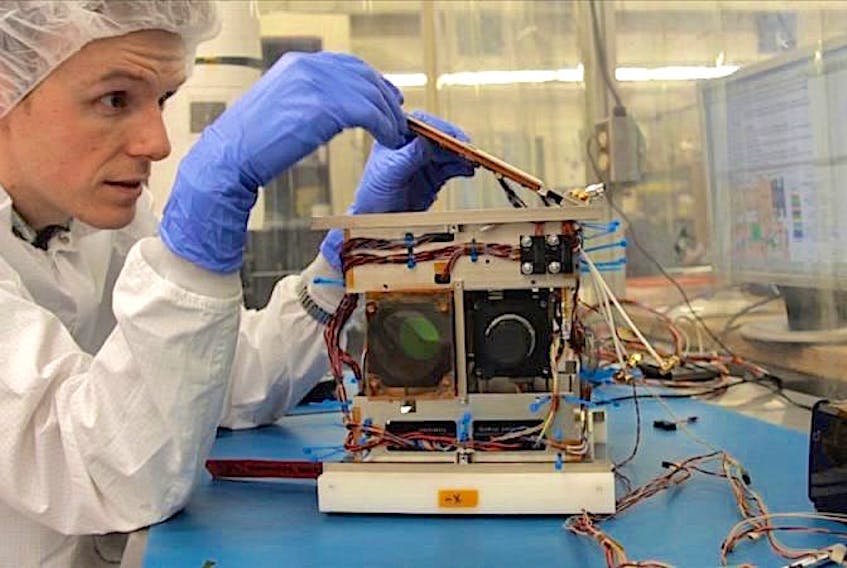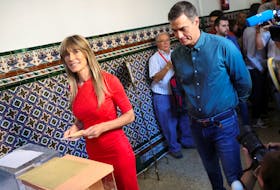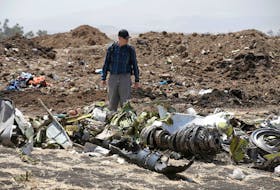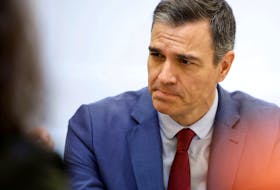SYDNEY, N.S. — Climate change might not be rocket science but it’s a lot easier to understand when a rocket scientist explains it.
That’s exactly what aerospace engineer Cordell Grant will do over the course of the next several weeks in a series of columns that will appear in the Cape Breton Post beginning on Jan. 11.

Grant, who is originally from Howie Centre, recently wrote a series of 20 social-media posts that succinctly break down global warming in a way that makes it easy for pretty much anyone to understand.
While he’s not a climate scientist, Grant, who now lives in Toronto where he is chief operating officer for Sinclair Interplanetary, has spent much of his career building satellites. And, as he explains, when you get down to it, Earth is just a giant spacecraft orbiting the sun.
“A lot of the principles that we use to analyze the thermal situation onboard our spacecraft and to design thermal control systems on spacecraft basically gives you the background knowledge you need to understand the thermal system of the Earth,” said Grant, 40, who was one of 72 people selected as an astronaut candidate by the Canada Space Agency in 2017. “Obviously, a spacecraft doesn’t have its own atmosphere, so that’s a difference, but when you get down to the basics of how does heat get to Earth, how does heat leave Earth, it’s the exact same when you look at a spacecraft as when you look at the Earth. You use literally the exact same equations to calculate the temperature of your spacecraft and calculate the temperature of the Earth.”
BIO
Cordell Grant
- Age: 40
- From: Howie Centre
- Lives: Vaughan, Ont.
- Family: Wife Sonia; children Skye, 6; Kiper, 3
- Education: Graduated from CBU in 2000 with a bachelor of science (math); received bachelor of engineering (mechanical) from Dalhousie in 2003; completed master of applied science at the University of Toronto Institute for Aerospace Studies in 2005.
- Resumé: Worked for University of Toronto Institute for Aerospace Studies designing, testing, launching and operating about a dozen spacecraft until 2016 when he joined Sinclair Interplanetary, a Toronto-based manufacturer of high-performance spacecraft hardware. That same year he also co-founded QEYnet, a startup that aims to build an ultra-secure global encryption network using satellites.
- Out of this world: Grant has long been fascinated with space. He first applied to the Canadian Space Agency’s astronaut program in 2009 and in 2017 was named one of 72 potential candidates to be one of Canada’s next two astronauts.
- Play ball: Grant played for the Capers baseball team while attending Cape Breton University.
Grant decided to step outside his comfort zone after the most recent federal election. He said it became clear that outside of the scientific community, there was much disagreement and uncertainty on climate change among political parties and the public.
“I would say the recent election was pretty catalysing — there was a lot of information going around during that time in particular about climate change and Canada’s obligations and role in that. I was seeing a lot of information being posted by people and rather than try to correct that on a case-by-case basis, I thought not only am I seeing this but all kinds of other people are seeing this, and I went looking for a really good source of information that really explained this from the ground up and I couldn’t really find anything, so I thought maybe I can do something better.”
As Grant sees it, the public is divided into people who believe the science, people who don't believe, and people who don't know what to believe. He said that’s a problem because science is meant to be understood, not believed. While many people believe that climate science is too complex for the average person to understand, he hopes his series will prove that’s just not true.
“When we look out at sort of the landscape of the public today, I see there are some people who are pretty convinced this is a problem and something needs to be done. To those people, what I hope is this would give them ammunition to keep doing whatever it is they’re doing, that they can better defend their positions so they can point to this and share this with people. Then there’s the people who just don’t necessarily know what to think. Those are the people who are most easily influenced by misinformation, so my goal there would be to give them such a clear demonstration that the science is pretty clear cut and not actually terribly complicated, that it eliminates the doubt that they experience every time they’re exposed to the opposite argument, so they’re less likely to believe that misinformation that is just ever present on the internet. And then there’s the third group of people that are probably not going to change their beliefs no matter what I say. Hey, if I change their minds in any way, shape or form, or if I make them think twice before sharing a thing that they haven’t actually necessarily verified as in any way true, then maybe I’ve reduced the amount of misinformation that’s out there too.”
RELATED:









